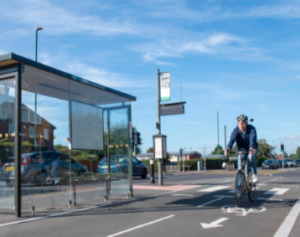Government is not on track to meet its objectives to increase rates of cycling and walking, despite increased ambition in recent years. However, the Department for Transport (DfT) has recently made changes in its approach to investing in active travel which should improve the outlook for its longer-term ambitions, according to a new National Audit Office report.
Active travel – everyday journeys made by walking, wheeling, or cycling – has a range of benefits for people’s health and the environment, including being a low-carbon form of travel. DfT wants active travel to be the natural choice for shorter journeys in England, or part of longer journeys, by 2040.
Between 2016 and 2025, DfT estimates that government will provide around £6.6 billion on active travel interventions. However, DfT does not yet know if the schemes delivered by local authorities to date have been of good enough quality and does not have a plan in place to track the benefits of its active travel investment. The NAO reports that more than half (56%) of local authorities – who play a significant role in delivering interventions – have low capability and ambition to deliver active travel projects, which has affected the quality of active travel interventions delivered with government funding to date.
During the COVID-19 pandemic, DfT launched a £250 million fund to support the rapid delivery of active travel schemes. While designed to help facilitate social distancing as well as increase rates of active travel, some local authorities found it challenging to build schemes quickly and to engage their communities during this time, which led to poor implementation and some locally controversial schemes.
DfT has recognised several long-standing issues with active travel investment and recently changed its approach. In 2022, DfT established Active Travel England3 to raise the design standards of active travel infrastructure, hold local authorities to account for their investments in active travel, provide advice on how to improve walking and cycling provision, and increase the skills and capacity in local authorities to deliver active travel schemes.
Active Travel England has made good early progress in tackling long standing issues, and the NAO’s report identifies areas that DfT and Active Travel England must continue to work on if they are to maintain this momentum. These include developing longer-term stable funding for active travel, building greater capability in local authorities to deliver schemes, and making people feel safer while walking, wheeling and cycling.
The NAO recommends that DfT review its objectives for 2025 and beyond and set Active Travel England stretching but achievable targets, taking account of progress to date and available funding, and that benefits of schemes are better tracked to inform future funding decisions. The NAO also recommends that DfT works with others in government to develop a more stable funding environment for local authorities delivering active travel interventions, and that DfT and Active Travel England set out how they plan to approach public engagement and address concerns about safety.
“Active travel schemes have the potential to deliver significant health and environmental benefits. However, DfT knows little about what has been achieved through its past spending and is not on track to achieve most of its objectives.
Gareth Davies, the head of the NAO said: “DfT has raised its ambitions for active travel and recognised areas where its performance must improve. Establishing Active Travel England is a good step; Active Travel England and DfT must now maintain this early positive momentum, by learning what works and applying it and building partnerships across central and local government.”






















